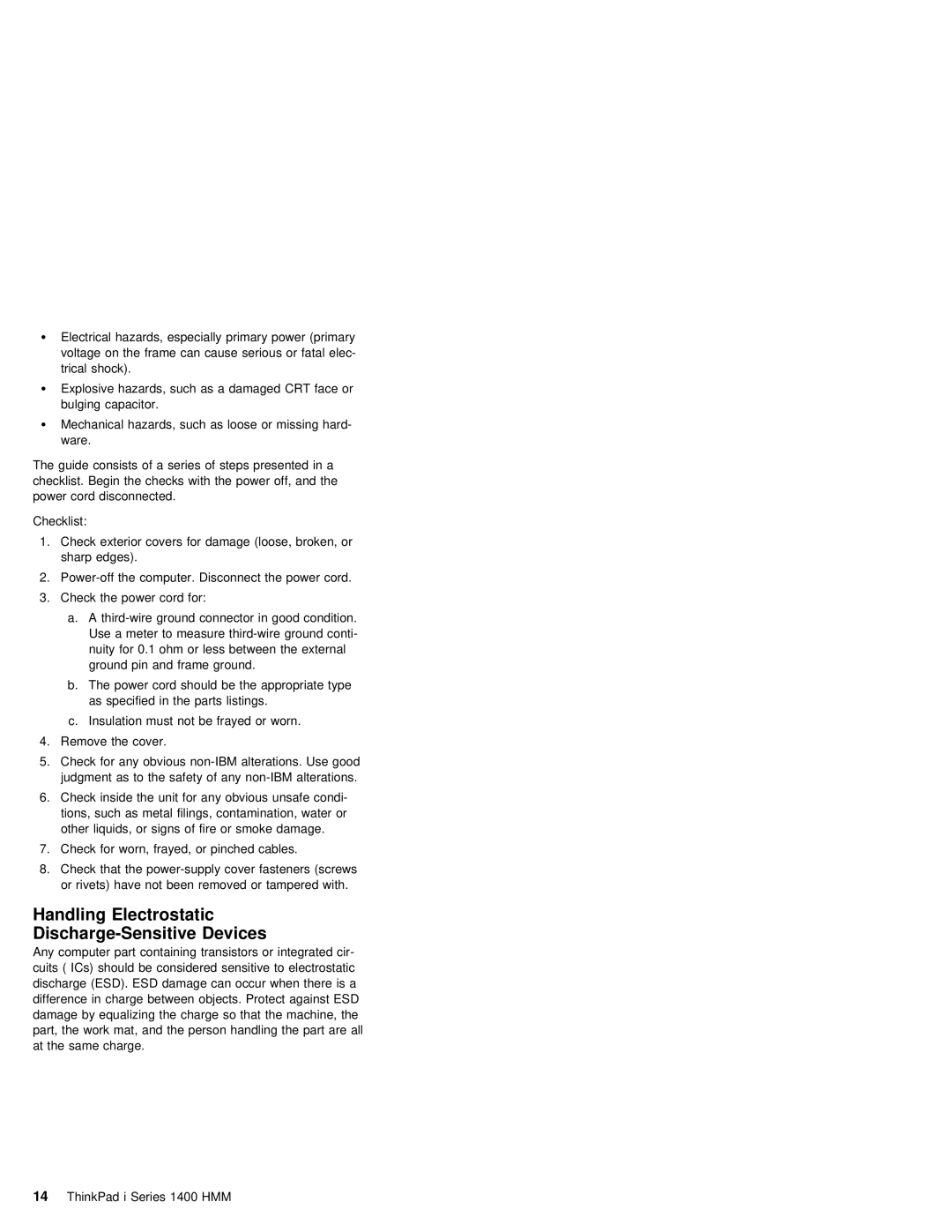ŸElectrical hazards, especially primary power (pr voltage on the frame can cause serious or fata trical shock).
ŸExplosive hazards, such as a damaged CRT face bulging capacitor.
ŸMechanical hazards, such as loose or missing har ware.
The guide consists of a series of steps presente checklist. Begin the checks with the power off, an power cord disconnected.
Checklist:
1.Check exterior covers for damage (loose, broke sharp edges).
2.
3.Check the power cord for:
a. A
b. The | power cord | should be | the appropriate |
as | specified in | the parts | listings. |
c. Insulation must not be frayed or worn.
4.Remove the cover.
5.Check for any obvious
judgment as to the safety of any
6. Check inside the unit for any obvious unsafe co tions, such as metal filings, contamination, water other liquids, or signs of fire or smoke damage
7. | Check | for | worn, | frayed, | or pinched | cables. |
8. | Check | that | the | |||
| or rivets) | have | not been | removed or | tampered wi | |
Handling Electrostatic
Discharge-Sensitive Devices
Any computer part containing transistors or integrated cuits ( ICs) should be considered sensitive to ele discharge (ESD). ESD damage can occur when there is difference in charge between objects. Protect aga damage by equalizing the charge so that the machi part, the work mat, and the person handling the par at the same charge.
14 ThinkPad i Series 1400 HMM
